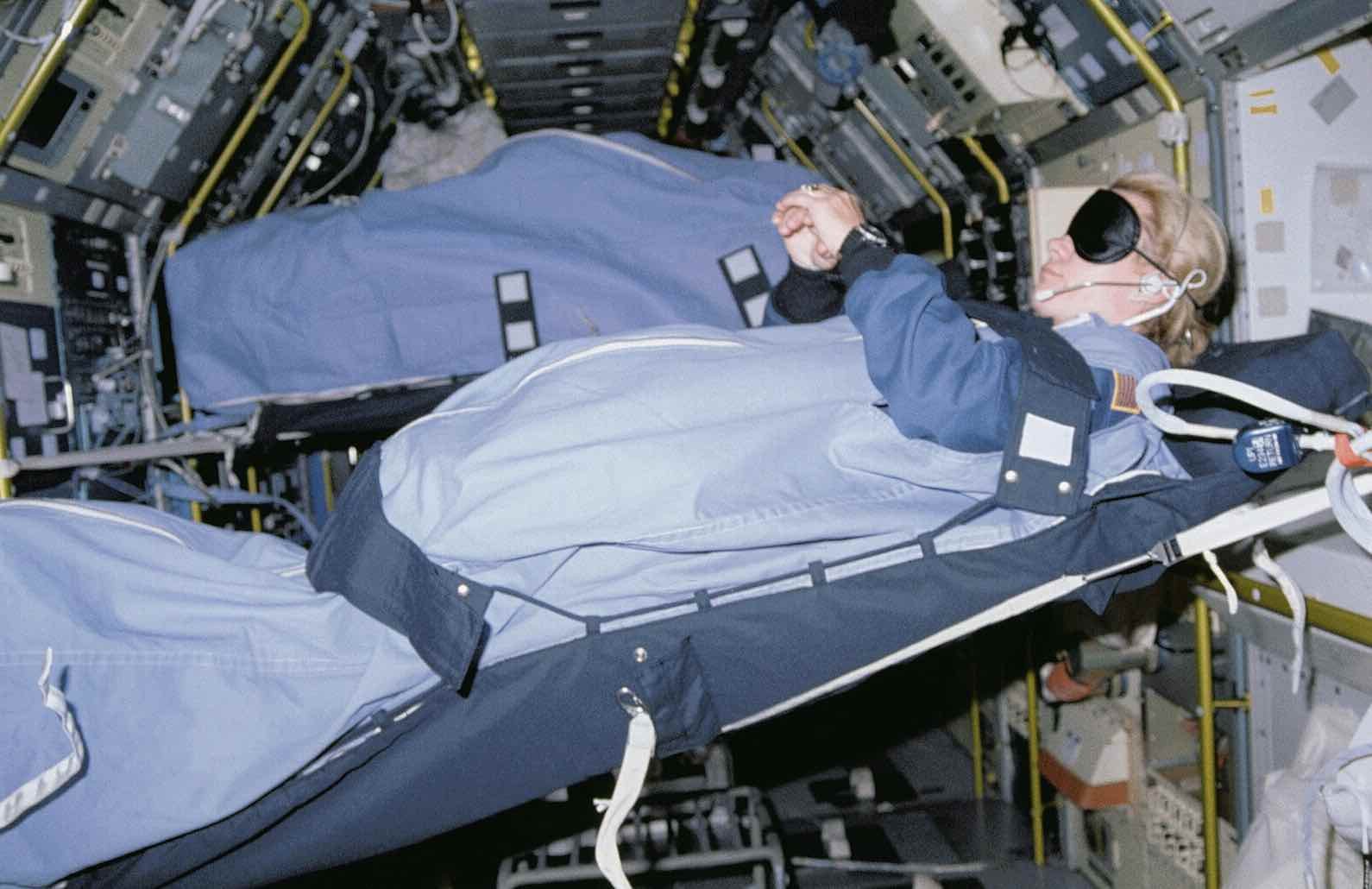New research simulating the effects of microgravity experienced by current and future astronauts has revealed a potentially significant disturbance to normal sleep rhythms due to long periods in space.
Previous studies have looked at other potentially deleterious effects of microgravity on the overall physical health of astronauts who spend considerable amounts of time in space. These studies showed changes to physiology, including immune suppression, increased inflammation, and reduced muscle mass and bone density.
This latest effort is the first to look specifically at space travelers’ sleep rhythms and what therapies and treatments may be created to mitigate the potentially negative effects caused by extended time in microgravity.
How Researchers Simulate Microgravity to Study Sleep
Previous studies had volunteers remain in a state of constant bed rest while reclining at a six-degree head-down tilt angle to simulate the conditions astronauts experience during space travel. In this study, which was coordinated by the European Space Agency (ESA) and published in the journal npj Microgravity, researchers working at the MEDES space clinic in Toulouse, France, recreated those same conditions.
First, twenty male volunteers were selected to spend 90 days in a specified lifestyle protocol before the simulated microgravity experiments. During this time, a two-week baseline of each volunteer’s overall health and sleep rhythms was recorded. This included recording wrist skin temperature, motor activity, light exposure, and diurnal sleepiness throughout the entire 90-day protocol.
During the protocol, the researchers used an electroencephalogram (EEG) to analyze sleep patterns for two separate 24-hour periods. The team also collected samplings of the volunteers’ saliva to monitor the “phase amplitude” of melatonin, the hormone that manages sleep-wake rhythms, as well as samplings measuring the levels of the body’s primary stress hormone, cortisol.
Next, the volunteers were all confined to constant bed rest for a term of sixty days. Like previous studies, this involved keeping the volunteers reclined at a six-degree head-down tilt angle to simulate the effects of microgravity. While the simulated astronauts do not experience actual weightlessness, remaining in this position removes the natural up and down rhythms we get in our daily lives on Earth that astronauts lose when the pull of Earth’s gravity is removed.
“The normal posture cycle is a significant reinforcement signal for biological rhythmicity, and its removal in this protocol and absence in space flight likely contributes to a reduction in rhythmic amplitudes of many of the variables studied here,” explained Professor Simon Archer, a Professor of Molecular Biology of Sleep at the University of Surrey and the study’s senior author.
Once again, writs-skin temperature, motor activity, light exposure, and diurnal sleepiness were sampled at three distinct points during the 60-day phase. Also, three 24-hour sleep periods were monitored via EEG.
Finally, after completing the bed rest phase, the volunteers went through a two-week recovery period. Like previous phases, all types of biometric, behavioral, and sleep data were collected, but only one 24-hour sleep sample was collected during this two-week phase.
Results Reveal Potentially Alarming Adverse Sleep Effects
When the researchers analyzed the data, they found a number of potentially alarming results. Study subjects not only slept less and experienced lower sleep quality, but they also slept less than a recommended 6.5 hours at a time. The subjects also showed more daytime sleepiness and ended up napping more than they did during their 90-day preparatory phase.
The study also found alarming patterns in melatonin amplitude, body temperature variance, which contributes to a healthy sleep rhythm, and other indicators that the simulated microgravity adversely impacted their simulated astronauts. The researchers note that such patterns require further study while also revealing that mission planners need to take astronaut sleep quality into account alongside other health concerns.
“This is the first time that sleep and various biological rhythms have been evaluated from an integrative perspective in a head-down tilt bed rest protocol for this long (60 days),” said Dr. María-Ángeles Bonmatí-Carrión, a postdoctoral researcher at the University of Surrey and the study’s lead author. “We are confident that these findings will serve in designing new protocols aimed at improving sleep and rhythmic robustness in space.”
The study’s results can also be applied to other processes, Bonmatí-Carrión explained, “such as aging or the impact of constant posture in our sleep and rhythms.”
Archer agrees.
“These results have important implications for future spaceflight, but also for conditions where individuals are confined to long-term bed rest.”
Christopher Plain is a Science Fiction and Fantasy novelist and Head Science Writer at The Debrief. Follow and connect with him on X, learn about his books at plainfiction.com, or email him directly at christopher@thedebrief.org.

